“Often in the darkest of times is when you see the brightest flame,” says American photojournalist Matthew McDermott about the spirit he observed of his countrymen on 9/11. Rushing to the site of the attack with two cameras and 24 rolls of film, he was one of the last to leave that day. His historic images of the brave first responders and firemen have inspired many Americans to sign up to serve their country in various professions. Matthew often feels he was blessed to have photographed that day, and he tells us why in this interview.
Subscribers get some sweet perks and are automatically entered into contests! Download our app for iOS, iPad, and Android and get no banner ads for $24.99/year.
Some of my favorite interviews have been with photojournalists, and this one is no exception. Speaking to Matthew, I could feel his passion for photography and his professionalism in ensuring that moving images are seen by the rest of the world. He rushed out to cover the scenes at Ground Zero over two decades ago but, like many that day, the memories are etched forever.
The Essential Photo Gear Used By Matthew McDermott
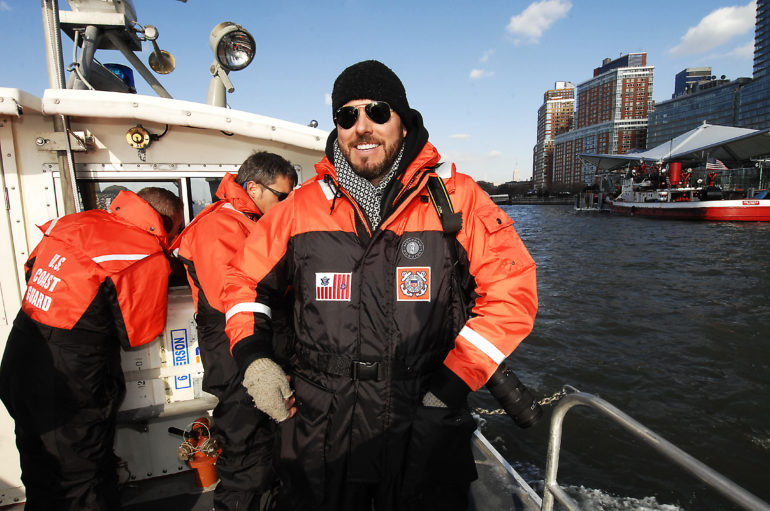
Matthew told us:
I’m a less is more type of guy when it comes to camera gear. And I always shoot with two bodies. One body has a short lens; generally a 17 to 35 mm with a flash. And then the long body is either a 70 to 200 or 80-200. The bulk of my work that I do is on that platform
The Phoblographer: Hi Matthew. Please tell us about yourself and how you got into photography. What was your journey to photojournalism like?
Matthew McDermott: Obviously it’s not a career that has a normal path. There’s no real guidelines on how I become a photographer, but I started photography in high school and immediately fell in love with it. And then continued in college. Minoring in photography, along with a few other things.
And then actually also taught beginner photography in college as well as, you know, assistants and all that kind of stuff. And so which meant I had keys to the, to the dark room, so pretty much I would, you know, the labs would close at 10 and I’d be there 10 to 1 and would spend a lot of time in the darkroom late into the nights and just loved it. Absolutely loved it. So time passed and I moved around the country, doing different things. And I took a break from photography and then ended up back in New York and decided it was time to go for it. I had put together a portfolio, and I walked into the Daily News at the time and walked out with a box of film and a press pass.
That was in the late nineties. And I have been a professional full-time professional photographer ever since. It’s tough; the career path of how to become a photographer. It’s not like becoming an accountant where there’s sort of steps that you take. I hit the ground running and I just never looked back for years. I would work seven days a week nonstop. I’ve traveled the world extensively and done and seen a lot of things.
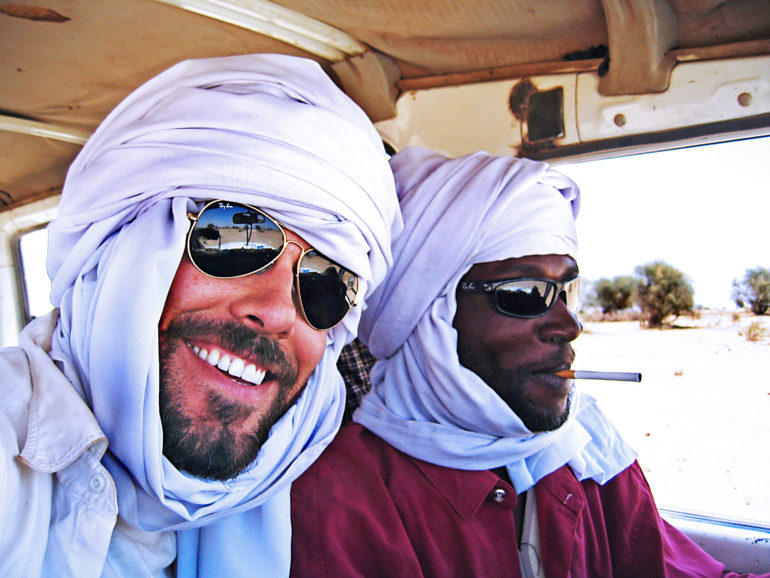
The Phoblographer: When you heard the news of the first attack, what thoughts ran through your mind? Did you drop everything and rush to the area?
Matthew McDermott: So I was living in Astoria, Queens, and I was slated to work that day, for the New York Post. At that time, I had left the Daily News for the New York Post, and I was slated to start at 10 o’clock. Actually, I was sleeping, and I got a phone call from my mother, and she frantically said, turn on the news – one of the towers was hit by a plane. So at the time, it didn’t make any sense how, how could this happen? But the thought that it’s an attack doesn’t really enter your brain either. So yeah, I jumped up. I threw in all my gear, and I’m a big motorcycle guy. At that time, though, I was between motorcycles. I would have to drive across one of the bridges going across the east river to get into Manhattan. I knew that if I took one of the lower bridges or tunnels, it probably would’ve been either closed or completely packed with traffic in emergency vehicles.
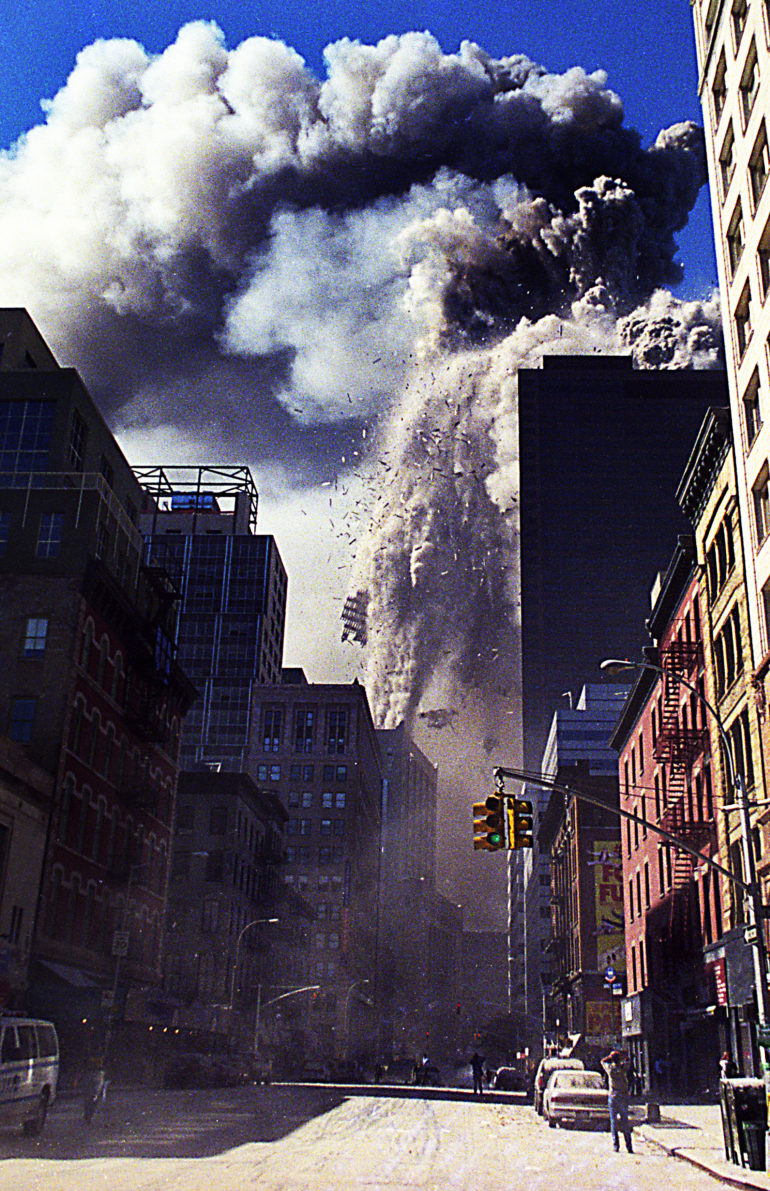
So at that time, there was a dear friend of mine; I had helped get him his first motorcycle and motorcycle license. I jumped in my vehicle, and I went across one of the Northern bridges, the Triborough, which is now the RFK bridge, and I called him on the way. He’s like, I know what you want. And literally, he tosses his motorcycle keys out the window of his apartment. And I jumped on his motorcycle and left my car parked up there. Which was up on 117th street in Amsterdam, somewhere around there. I started, I hopped on Broadway, and there was a black, unmarked police vehicle with lights blaring flying down Broadway.
I hopped right on his bumper, and I followed him all the way down. So that’s, that’s sort of how the day began. The biggest thing when I was going down was – do I have all the correct gear on me? Am I prepared?
You’re sort of just kind of getting in the zone, getting your game face on for what you could be running into and what kind of scenarios; hopefully, you got the right stuff on you for, for the situation.
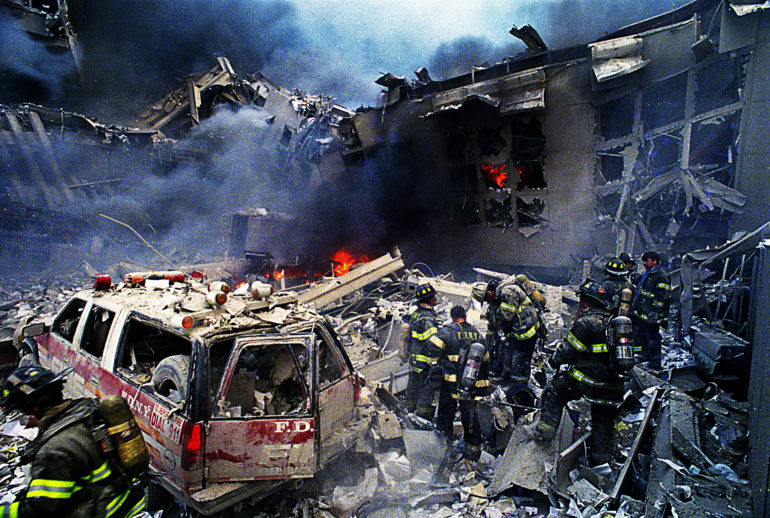
And you sit there going like “My God, this is New York City. I mean, this is my city where I live, and these are Americans; how the hell did this happen?”
The Phoblographer: All that chaos. how were you able to focus and continue photographing the devastation that unfolded? How did you fight the urge to not photograph but observe instead?
Matthew McDermott: You know, I gotta tell you this. I feel absolutely blessed that I was there that day, and I know that may sound weird to a lot of people. But you know, it was obviously just an unbelievable historical event that needed to be documented. And I think that if I hadn’t gone, I don’t know; it obviously changed my life. I mean, if I wasn’t there, I probably would have enlisted and gone into the military. But the power of the image is something that I realized that day, but also what I really learned about myself as well.
I grew up, getting into a lot of stuff as a kid. And I was a tough kid, and I’ve always been able to handle myself. But those are these moments in life that not everybody has when you’re tested when you’re truly tested, and you find out what you’re made of. I didn’t even bat an eye as far as I remember. I just kept running in when everybody else was running away.
As the day went on, there is something to be said; the camera sort of doesn’t separate you from the scene, but it’s your tool; it’s your job. That camera in hand, you’re there for a reason. And the job comes first, and you gotta get it done. So, you know, you always, always, you know, push forward, push forward, push forward.
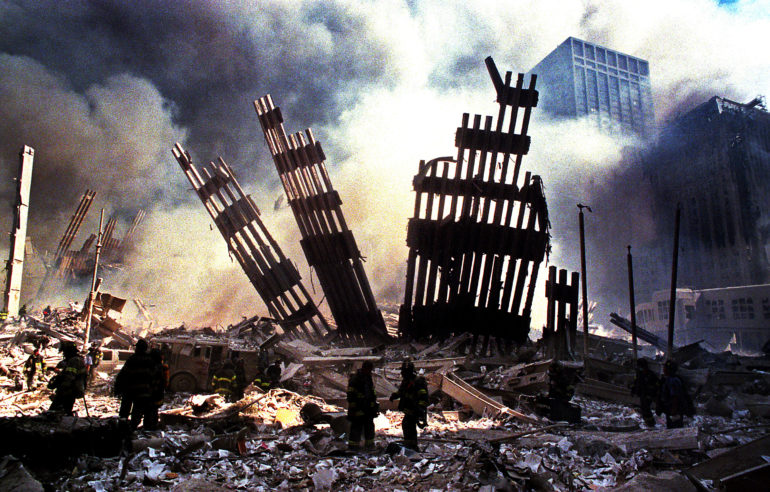
The Phoblographer: Was there any thought about whether your gear could continue working for the entirety of the day? Was it the most challenging conditions you’ve ever photographed in?
Matthew McDermott: I was shooting film. I had two F4 Nikons; I’ve always been a Nikon guy. When you look at the images, you can see how much debris got, obviously got into the cameras. I mean that the negatives are all very scratched. I hate to say it, but it really kind of adds to the reality.
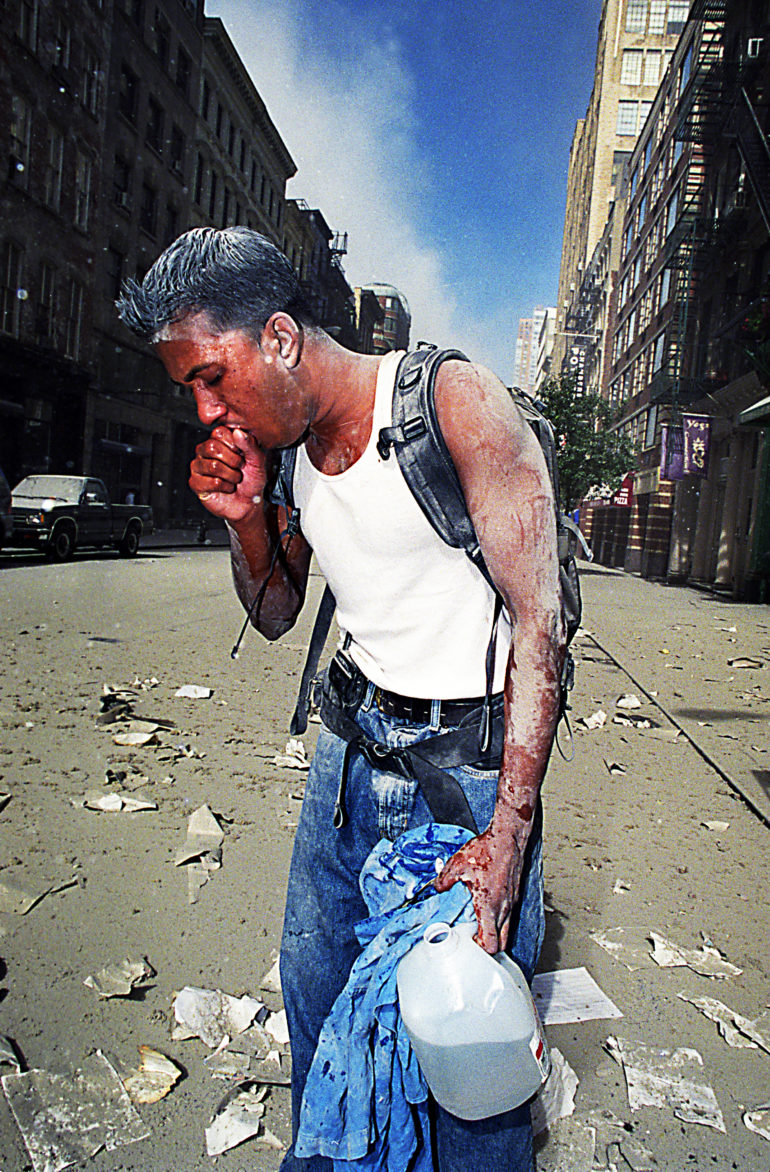
Challenging. I mean, it varies. Haiti was a tough one, you know, as far as challenging goes. When you go into areas, countries, whether it’s conflict or humanitarian aid situations, often the infrastructure is obviously destroyed. So sometimes the biggest problem, especially in the past, is finding the ability to actually transmit images out. That’s often difficult, but obviously, in this situation, that didn’t matter.
Look, you’re lucky if you have a roof over your head to stay outta the rain and a dry floor to sleep on. Right. Obviously, technology’s changing, and there’s things now you can bring with you and whatnot. But over my more than 20-year career, there’s been times where you’re in areas where you just have nothing you know, and you gotta make due, you gotta figure it out. When I was a couple of blocks away when the second one dropped, all I did was jump behind the corner of a building and crouch down. I stuffed my cameras up under my shirt and tried to keep the bulk of the dust off of them. It is what it is. But again, that’s why professionals buy professional gear. It, it definitely holds up a lot better. And that’s why I’ve always loved Nikons. Nikon’s could take a beating, right.
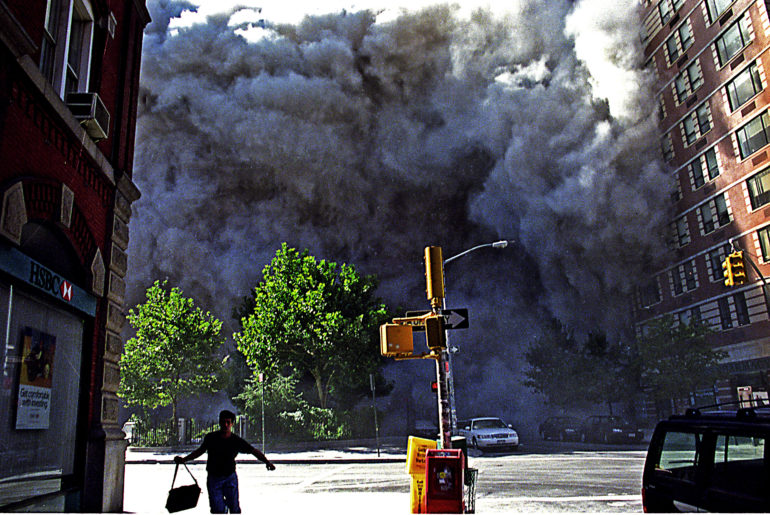
The Phoblographer: Photojournalists are some of the most selfless people around, always putting the shot first before worrying about themselves. Were you worried that you might not make it out of there?
Matthew McDermott: It’s gonna sound kind of arrogant, but I’ve kind of always been able to physically handle things. I’ve almost gotten killed a few times, and yet I made it out unscathed. I know how to operate pretty well in shitty environments. But there was one point where we were all down after the tower fell, firefighters and cops, and rumors were starting to spread around the pile that they may have been some sort of chemical nerve agent or something in the planes. And that we were all breathing this and we were probably all gonna be dead, within a short period of time. Everybody just kinda looked at each other and said, well, whatever, it is what it is. You’re still alive and on your feet right now, so you keep doing the job.
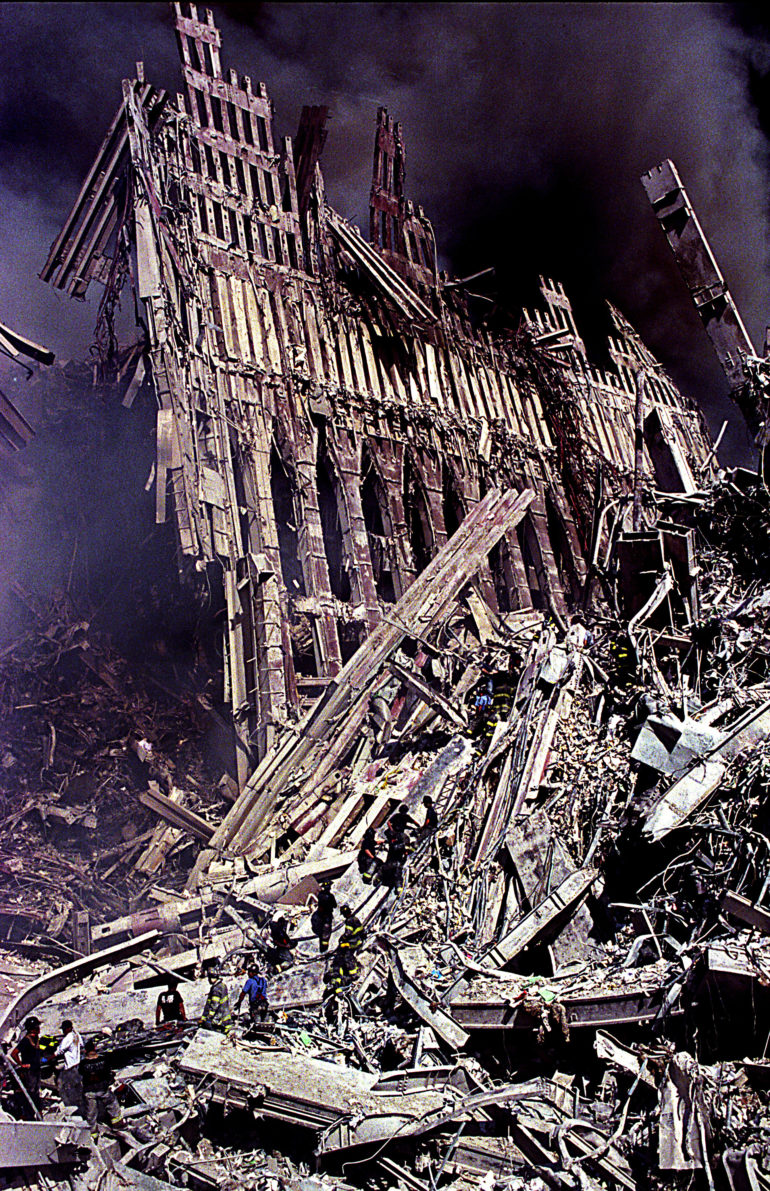
FDNY firefighters and first responders form the first human chain leading up the steep rubble pile searching for possible survivors shortly after the collapse of the New York City Twin Towers, which were stuck by two passenger airliners.
But a certain type of people become firemen and a certain type of people become cops. It’s the same thing. There’s definitely a personality trait to it. If you’re not conflict-oriented, there’s certain careers you don’t wanna go into.
I think I had about 24 rolls on me in, in a bag. And I actually started shooting very conservatively. It’s not like today, where you could just bang away endlessly on a digital camera. But I was expecting to stay the whole night and into the following day, so I was being very mindful of how much film I had. And actually, I was one of the last photographers for the Post that they were able to get a hold of. Which is funny, cuz my mom all day kept calling them, and they’re like, “Oh yeah, yeah, we heard from him,” and they hadn’t. They thought I was dead, but they didn’t want to tell her that until it was confirmed. My girlfriend at the time, and my parents, they all thought I was dead, and my mom was just beside herself. I’m her only child, and my mom and I we’re incredibly tight, just unbelievably tight. And she was sitting there you know, saying like, “I’m the one that I called him and, and told him – wake up and get down there.” So thank God, it all turned out okay. I mean she just would’ve been devastated beyond belief.
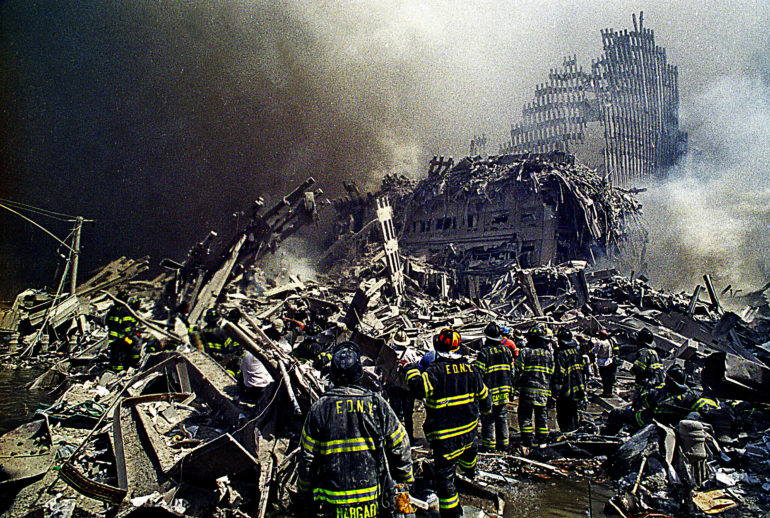
The Phoblographer: After the dust had (at least partially) settled, what memorable scenes did you observe there?
Matthew McDermott: Well, I’ll tell you what was incredible. It was a beautiful day. It was a crystal clear sunny day. And there were times, and you can see this in the photos, where the smoke is everywhere; you can’t see a thing. But then all of a sudden, the wind would blow through and shift, and it just would blow all the smoke in one direction, and the sun would come through. And then you’re literally standing like you’re on another planet. You’re jumping from beam to beam, each the size of a car. There’s these massive steel beams, there’s fire, blowing out of different spots. And you sit there going like “My God, this is New York City. I mean, this is my city where I live, and these are Americans; how the hell did this happen?”
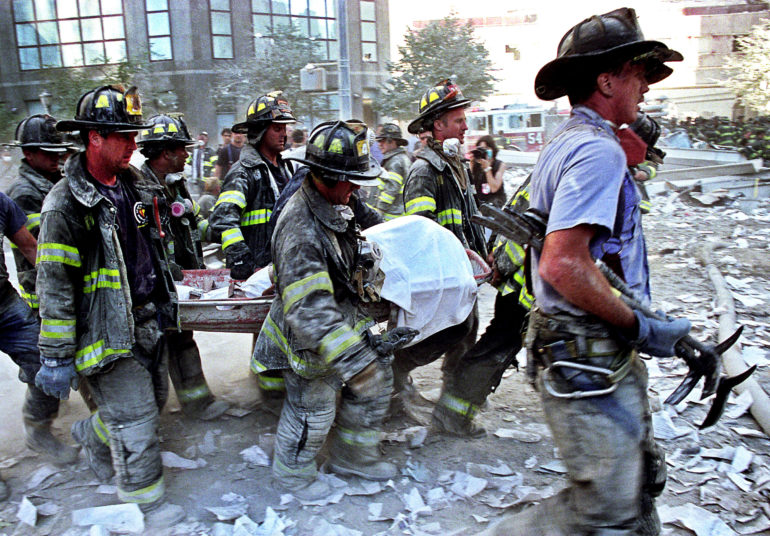
There’s a moment when you put the camera down, and it just, it does take your breath away; the scope of the situation. But I gotta tell you, hats off to all the first responders. Again, they’re built in a way that’s why they do that job; they don’t stop. These guys, they had no equipment. All their equipment was smashed. These guys were going in just by hand, trying to find survivors. There’s that one famous photograph of mine, with a firefighter kneeling over an ax and his name was Mike Bellatoni, and he came from Staten island. They took the Staten Island ferry over; they had no equipment. So the ax is what he took from the ferry. That’s the actual fire ax of the ferry. And he grabbed that just to have something. The selflessness, the heroics, and sheer bravery is just inspiring in these moments.
Often in the darkest of times is when you see the brightest flame of truly what people are made of. Again, it was, it was truly an honor for me to be there that day and to have documented history. And, you know, I, I still run into guys, I’m friends with photographers that were there and, you know, no one ever really talks about it. It just was a real privilege for me to be there, and I wouldn’t wanna have been anywhere else. I just feel absolutely honored to have been able to be there and do the job I did and show the world what happened that day
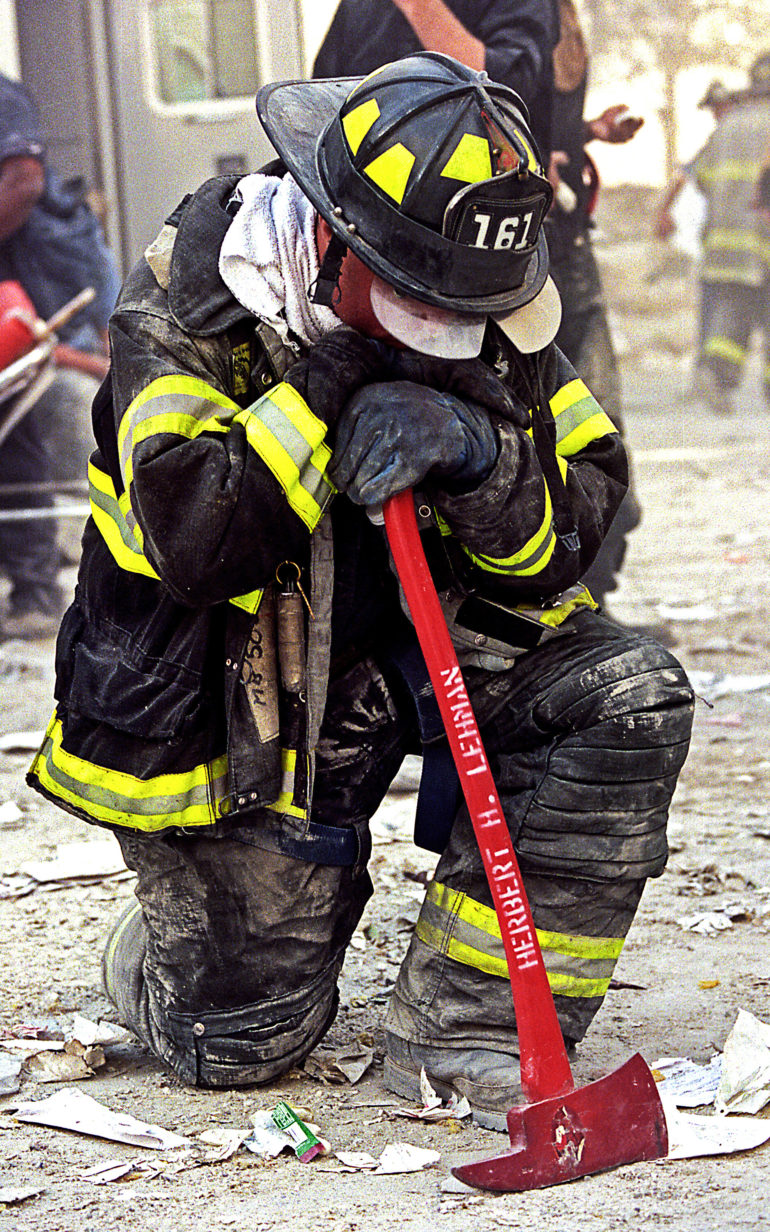
The Phoblographer: The photograph of the firefighter looking at the wreckage has gone on to become one of your most famous images. When you snapped it, did you think it would be such a popular photo?
Matthew McDermott: The one photograph of Matthew Long, he was standing there with the pike in his hand and I’m behind him. And, and he’s looking at the whole scope of the pile standing there, defiantly. It’s one of my favorite shots. It’s like literally he’s got a hand tool, staring at this, what used to be these two glorious towers with an unknown amount of dead Americans beneath their feet. And yet, it’s like he’s about to jump in and do what he can. I think that photo really sums it up. You know it’s funny, there’s times when you take a photo, and you’re like, holy shit. That was amazing. Especially when you do this long enough you know. When I was in Haiti, I photographed the little boy Kiki being rescued who was buried for eight days. They pulled him out, and he just reached his arms to the sky. You just know, I mean, you know. Like, “Oh my God, that just happened. Holy shit.”
And I stood there, and he knew I was behind him. He gave a nod, and I gave a nod. He and I have spoken since then. I obviously gave him the photo; he’s a really, really nice guy. But at that moment, I just thought, “This is incredible.”
Editor’s note: See lead image of the article for reference
You’re still alive and on your feet right now, so you keep doing the job.
The Phoblographer: Are you still in touch with the people you befriended on that day? When you think back, what thoughts come to mind of the undying spirit of Americans?
Matthew McDermott: You run into guys, you know. I mean, there’s a couple of guys that are still active firemen, which is awesome. It was over 20 years ago, and whenever I run into people, I always offer to send them photographs for free of guys that have been there. A lot of my work I always share for free with people or family members that had anything to do with 9/11.
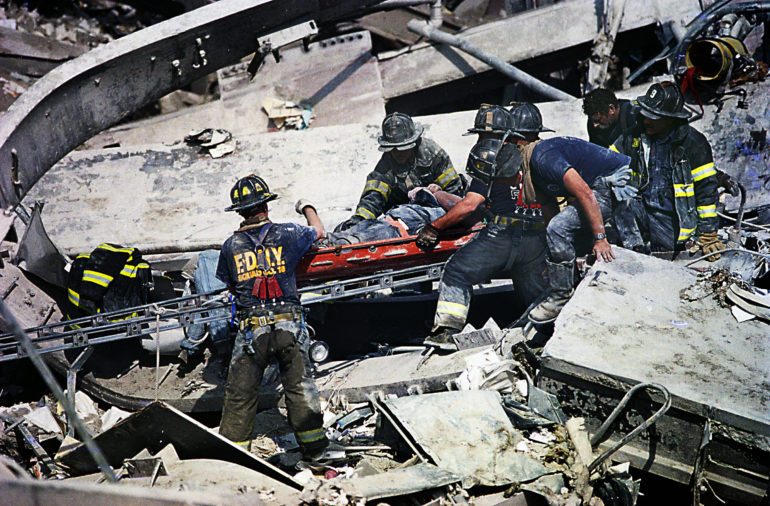
The Phoblographer: It was the epicenter of the world for a long time. How did 9/11 change you as a photojournalist, and in what ways has it impacted how you view the world through your lens?
Matthew McDermott: It changed my life in that I don’t know if I would’ve stayed in photography again. If I wasn’t there that day, I probably would’ve enlisted; I’ve got a lot of military in the family. Within a week, I think I had 350 emails from young men all across America saying, “I just saw your photos. I’m going to enlist. I’m going to fight.” And just realizing the power of the image and the pride I had in the work that I did and how I handled the day, I just kind of knew, this is what I’m supposed to do. I just kind of figured I probably could do more with a camera than I could with a gun.
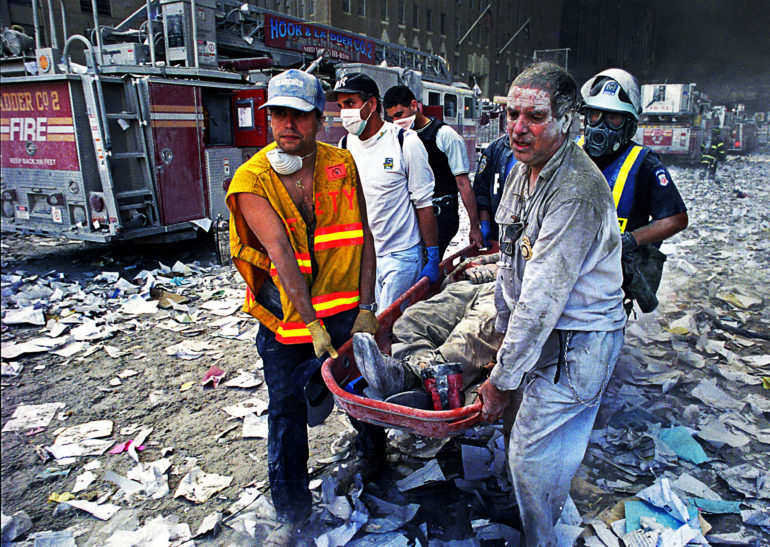
The Phoblographer: Where will you be this year on September 11? Will you still be photographing the memorial events?
Matthew McDermott: I’ve covered them in Memorial so many times, and it’s always been an honor. I did it last year – 20 years, that was a big one, and I definitely made sure I wanted to do it. But I think this year I’m probably going to stay home and just be with wife and kids. You know, I’ve got a one and a half-year-old and a four and a half-year-old. I think it’s just gonna be a day of just kind of quiet and family.
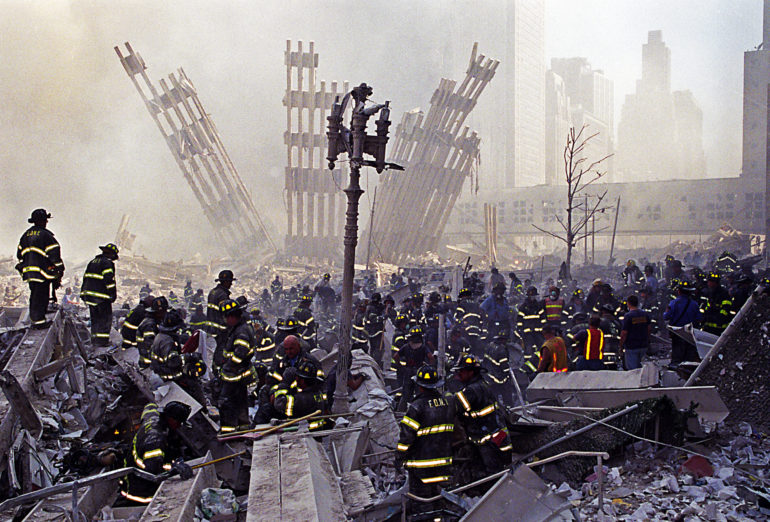
All images by Matthew McDermott. Used with permission. Check out his website and his Instagram page to see more of his work.
Want your work to be featured? Click here to see how.


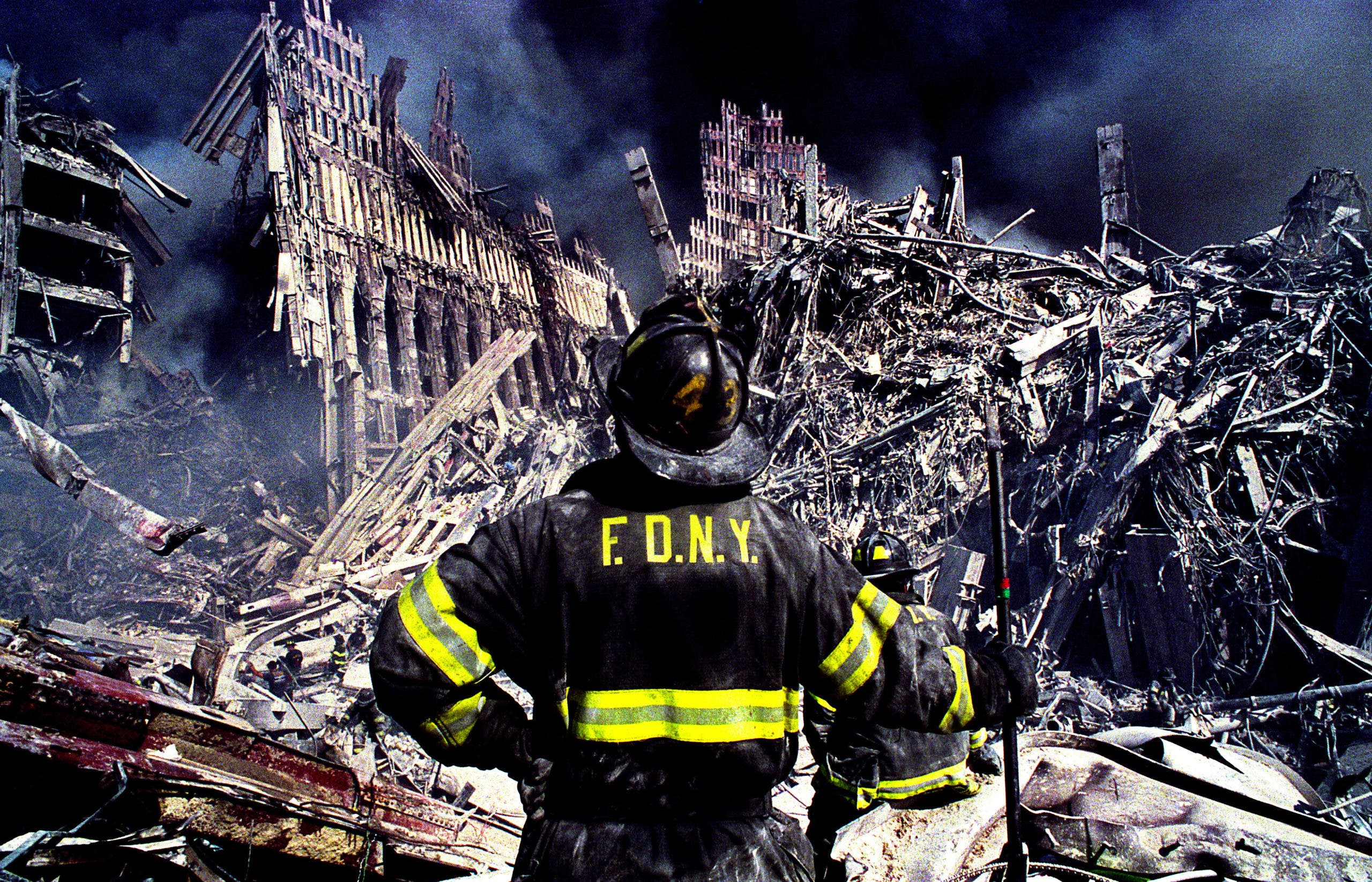
Leave a Reply